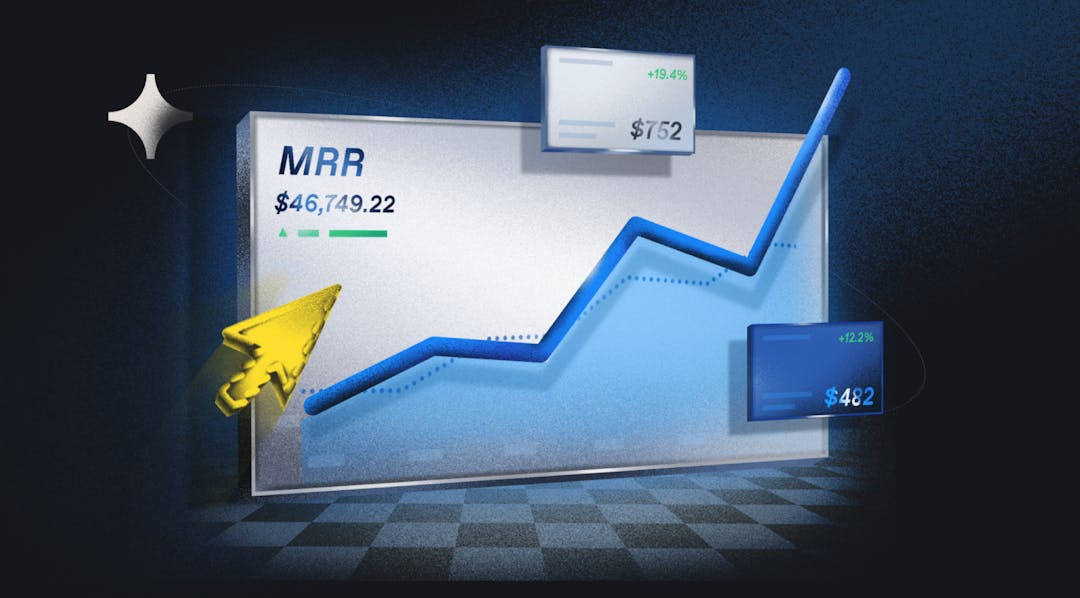In recent years, primarily due to the internet, there has been a significant shift in how businesses reach customers. Manufacturers have largely relied on middlemen to get their products to consumers for a long time. However, today they can market their products online and set up distribution channels to deliver products directly to consumers.
As a result, retail sales have been decreasing gradually, leading to thousands of closures annually. This is why the direct-to-consumer (DTC) strategy is gaining traction fast. Though e-commerce still accounts for a small portion of total retail sales, it is growing at a fast rate. In 2019, the total global e-commerce sales amounted to $3.53 trillion.
In 2020, data across the board showed exponential growth in the DTC niche. This accelerated growth from last year is thanks to the coronavirus pandemic forcing people to shop online and retailers to sell online instead of traditional brick-and-mortar stores.
However, e-commerce revenues are projected to rise to $6.54 trillion in 2022, highlighting the need for enterprises to achieve direct-to-consumer growth.
Are you thinking about getting your products directly to consumers? Read on to find out how you can achieve direct-to-consumer growth.
What is direct-to-consumer retail?
Direct-to-consumer retail is a strategy whereby businesses sell their products directly to the end-user without wholesalers, third-party retailers, and other middlemen. As consumers continue to embrace the convenience of online shopping, there is an increased need for businesses to achieve direct-to-consumer growth.
2 direct-to-consumer brands experiencing explosive growth
Though many businesses are yet to explore the benefits of direct-to-consumer growth, some have, and are reaping the fruits.
Here are a couple of examples of companies that have succeeded due to direct-to-consumer growth.
Bombas
After realizing that socks were the most requested items at homeless shelters, Randy Goldberg and David Heath wanted to give back. However, they also wanted to make something that people would love. This inspired them to start Bombas, a company that only sells high-quality socks. Their strategy was simple. For every pair of socks they sold, they would donate another pair.
Their initial goal was to donate socks worth one million dollars in their first year. After setting up an advertising campaign to propel growth, the startup was able to grow into a one hundred million dollar company.
Away
Though Away, the travel company, was intended to be a luggage company, the co-founders Steph Korey and Jen Rubio knew that they needed to be unique to penetrate the already saturated industry. This is why they positioned their startup as a travel company offering lots of beneficial content to users via podcasts, magazines, and their Instagram channel.
By branding the company as a reliable source of travel information, they now have a massive following on Instagram, and their website has approximately 800,000 views monthly. This strategy helped Away generate revenue of $125 million in less than three years.
How big is the direct-to-consumer market?
E-commerce’s continued growth is an encouragement for businesses to expedite direct-to-consumer growth. Here are some direct-to-consumer statistics indicating the need for direct-to-consumer growth:
US direct-to-consumer (D2C) ecommerce sales is forecasted to reach $151.20 billion in 2022
According to an emarketer report, direct-to-consumer ecommerce sales are worth $129.31 billion in 2021 and have grown by 15.9%. The report also forecasts steady revenue growth in the next few years as more ecommerce brands adopt the D2C model.
40% of manufacturers in the US are already selling direct to consumers
Undoubtedly, online shopping offers consumers a lot of conveniences. However, with safe and secure payment methods such as Stripe and Paypal, it is now just as convenient for manufacturers. This is why 40% of US manufacturers are already implementing their direct-to-consumer growth strategy.
6 tips for direct-to-consumer growth
With e-commerce projected to continue to grow steadily over the coming years, direct-to-consumer growth now appears more of a necessity. Though it is a promising avenue for business, it goes well beyond offering products directly to consumers.
For your direct-to-consumer growth plans to yield desired results, you must be creative in your approach as well as using tried and tested methods. Here are some insightful tips to ensure your direct-to-consumer growth efforts are successful:
1. Use a subscription-based model
Are you aware that you have a 60-70% success chance when selling to a customer you already have compared to 5-20% with new customers? Therefore, as you initiate your direct-to-consumer growth plan, identify ways to drive more sales from your existing client base.
One of the best ways of achieving this is by using a subscription-based model. A DTC subscription model generates revenue by charging customers a recurring fee that is processed at regular intervals. For DTC, this means customers will pay you a monthly rate and receive a product once per month.
A subscription model is a powerful tool in terms of retention. You must nurture customer relationships since it’s a recurring revenue model and customers continuously pay you. As long as the customers are happy, you have definite revenue coming in on a monthly basis, allowing you to predict and strategize growth. Affordable monthly offers will not only create a consistent revenue stream for your business but will also help increase brand loyalty.
2. Build a scalable fulfillment process
Consumers are turning to online purchases due to the convenience it offers. As such, their interaction with your company as they are making orders should be seamless. Any delays or other disappointments will only encourage consumers to move to your competitors. Therefore, you should build a scalable order fulfillment process to ensure you can satisfy client needs as demand increases.
Ensure that the following stages of your order fulfillment process are well accounted for:
- Receiving Inventory: Decide whether receiving and storing inventory in-house or outsourcing to an e-commerce order fulfillment outsourcer is the best method to achieve direct-to-consumer growth.
- Inventory storage: Should you choose to store your inventory, establish methods of monitoring inventory levels to ensure all orders are fulfilled.
- Order Processing: If you manage your inventory, you should have enough capacity to ensure orders are delivered to packing stations, assessed for damages, packed, and transported to shipping points on time.
- Shipping the order: Identify reliable carriers to ship orders to your consumers.
- Handling returns: The process of returning orders should be straightforward and as easy as purchasing. This will help build trust with consumers, which is integral for sustained direct-to-consumer growth.
3. Lead with your messaging
Despite the promise that comes with direct-to-consumer growth, you still have to set yourself apart from the competition. This is where your company's values and personality come in. Consumers prefer buying from DTC companies that stand for something. Take up a mission or cause that will benefit the community and ensure it is highlighted in all your promotional materials.
4. Harness your data
One of the basic requirements of implementing a direct-to-consumer growth strategy is embracing technology. Interactions between you and consumers will take place online. As such, digitization is non-negotiable when it comes to direct-to-consumer growth.
Fortunately, with digital tools comes greater access to consumer information. Such data can help you identify trends and consumer preferences, thus giving consumers personalized offers. As a result, you will earn more sales from each consumer.
5. Leverage influencers
Influencer marketing, or having a public figure promote your products, is a hugely successful growth strategy. A survey conducted by the Interactive Advertising Bureau (IAB) found that celebrities influence 20% of DTC shoppers.
The goal of influencer marketing is to inspire clients to make a purchase. With the rise of social media, marketing efforts are more effective when consumers see a person they recognize and admire using a product. This is especially the case with DTC shoppers. A survey conducted by the Interactive Advertising Bureau (IAB), found that 20% of DTC shoppers are influenced by celebrities.
Therefore, incorporating an influencer in your marketing campaign can boost your direct-to-consumer growth significantly. Find someone with a large follower base to promote your brand on their social media websites. Their followers trust the endorsement and are likely to buy the products recommended by influencers.
6. Create a proactive retention process
Keeping tabs on your existing customer base as you work to acquire new customers is equally important. Unfortunately, there are times when consumers will begin trickling away. This is why it's crucial to have a customer retention program. Customer retention programs are measures put in place to increase customer value and encourage re-purchasing.
Such initiatives include:
- Onboarding programs
- Developing communication calendars for reaching out to customers
- Setting up a customer advisory board
- Customer loyalty programs
- Corporate social responsibility initiatives
- Customer Education programs
Though it may be difficult to reduce customer churn to zero, a robust retention program can help reduce it significantly, which will be invaluable for direct-to-consumer growth.
Is the direct-to-consumer approach worth it?
Along with the growth of the DTC market, selling your products directly to consumers has a wide range of benefits. The key among them is the direct interaction with customers, which allows you to foster lasting relationships.
Now that companies and customers alike have witnessed the benefits of direct-to-consumer buying and selling, it’s definitely here to stay. As more and more companies jump on the DTC model, it means your company needs to work 24/7 to remain competitive.
Is your company ready to capitalize on the growing direct-to-consumer market? Reach out to ProfitWell today for subscription growth services.
Direct-to-Consumer (DTC) Growth FAQs
What are DTC brands?
A direct-to-consumer (DTC) brand is, as its name suggests, a company that sells its products directly to the target customer. DTC businesses remove the supply chain partners from the process, controlling the entire customer journey and collecting total earnings.
Why does DTC boost profitability?
By implementing a DTC strategy, businesses get in direct contact with their consumers, which eliminates the costs of middlemen. Instead, DTC companies get to retain total revenue.
What is the future of DTC retail?
The future of DTC is the omnichannel approach. DTC brands can increase brand visibility and reach a wider audience by covering multiple communication channels. Ultimately, by expanding their customer pool, DTC companies can expect increased conversion rates, sales, and revenue.




